Hollywood’s Fascination with Silence and Horror
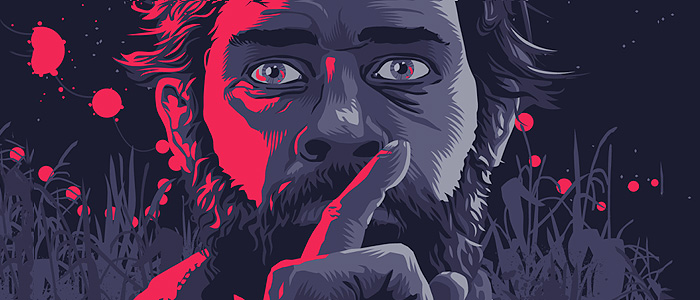
With the release of A Quiet Place in 2018 and The Silence in 2019, there is an unmistakable fascination in the connection between horror films and sound. In this connection, there is a visible pattern that these types of stories consists of that includes: 1) A family unit that is trying to survive, 2) A post-apocalyptic setting either taking place right before, during, or sometime after a cataclysmic event, 3) An entity with acute hearing hunting the family, 4) The family has to make as little noise as possible.
The rise of films that follow this specific model is both intriguing and exciting. Not only does it call back to the classic silent horror films of the 1920’s, but it exemplifies the works of Dr. Mark Griffiths, Dr. Glenn Walters, and Dr. Deirdre Johnston in finding the connection between audiences’ fascination with fear and film. The following article will be a detailed analysis simultaneously analyzing The Silence and A Quiet Place in conjunction with why Hollywood has this growing fascination with horror stories and sound. For audiences who may not have seen either movie, this article will contain spoilers.
The Silence
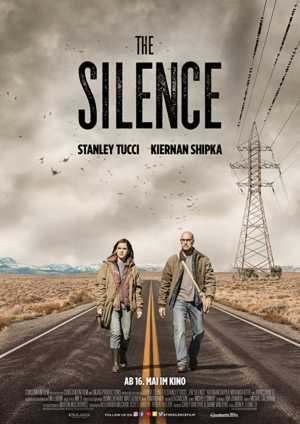
Based on the 2015 novel by Tim Lebbon 1, The Silence is a Netflix original film directed by John R. Leonetti, starring Kiernan Shipka, Stanley Tucci, and Miranda Otto. 2 It follows the Andrews family as they struggle to survive the infestation of a “deadly, primeval species who have bred for decades in the pitch darkness of a vast underground cave system…” 3 This primitive species is blind and they hunt using impeccable hearing, thus, as the Andrews seek refuge they are forced to remain as quiet as possible. This is further complicated by the fact that their teenage daughter, Ally, is deaf.
This is an intense story filled with difficult choices that highlight the harsh realities of living in an apocalyptic, distopian world. As the Andrews travel from the city into the countryside, where they hope that seclusion and silence will ensure their survival, they are forced to make morally conflicting choices. For example, when they encounter a religious sect that tries to kidnap Ally, the family bands together, protecting each other, and they suffer great losses as a result. 4 The Silence creates a lawless world that must be navigated carefully by characters who struggle with unique challenges.
A Quiet Place
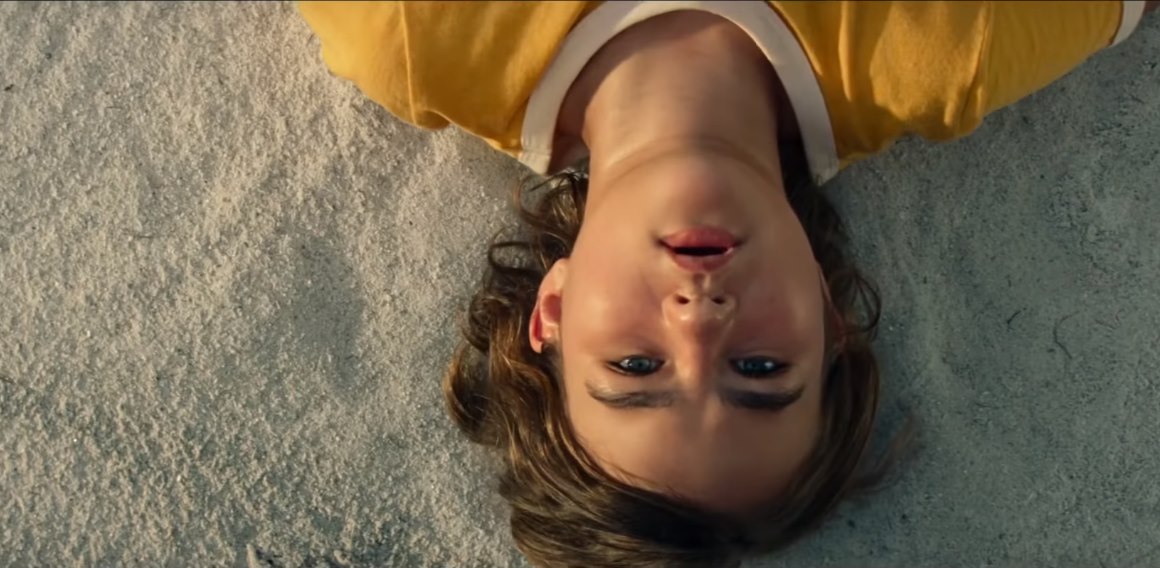
In the movie A Quiet Place (directed by John Krasinski, starring Emily Blunt, John Krasinski, and Millicent Simmonds) 5 audiences are treated to a horror story that features little to no sound. The dialogue is sparse, and the story is told primarily through action and visual stimuli.
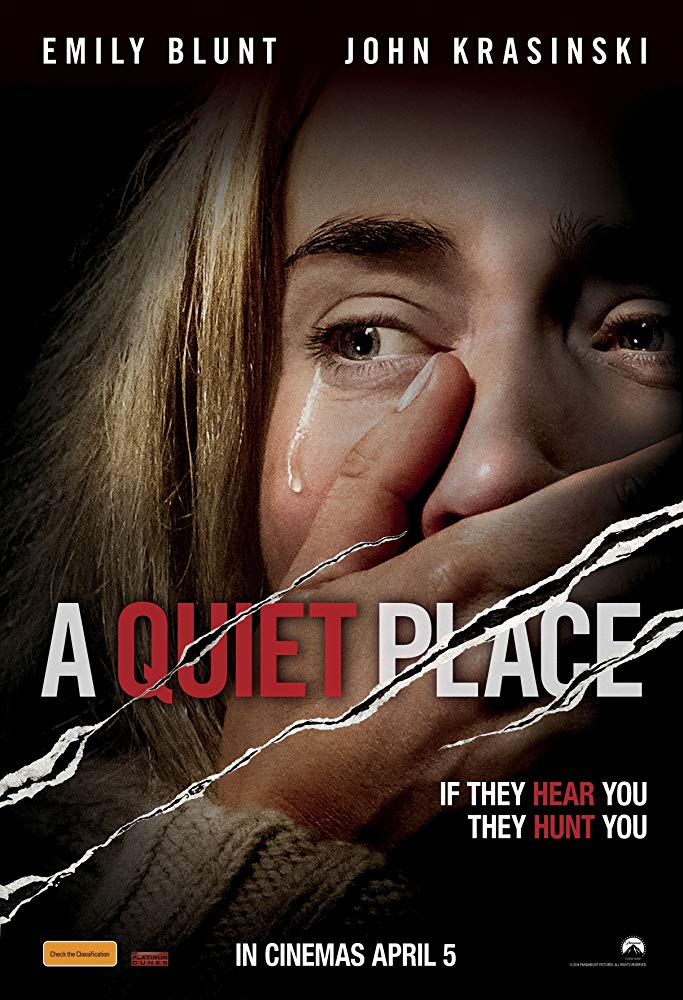
A Quiet Place follows the Abbott family through the end of times as they work together to survive an alien invasion in complete silence. 6 They have turned their homestead farm into a survival base, outfitting it with special lights to communicate and sand to muffle their footsteps. 7 Their lives are lived in almost complete silence, and they communicate primarily using American Sign Language. 8
Featuring only 25 lines of actual dialogue 9, this is a unique story because Regan Abbott (played by Millicent Simmonds) is deaf. This provides a special layer to the story, as the cast hardly have any spoken lines. Rotten Tomatoes gave it a 95% rating on the Tomatometer, with an 83% audience approval, and said:
A Quiet Place artfully plays on elemental fears with a ruthlessly intelligent creature feature that’s as original as it is scary — and establishes director John Krasinski as a rising talent. 10
Representation for the Deaf Community
There is a clear fascination in Hollywood with these types of stories. The formula for this sub-genre of horror has become: a family’s main goal is to survive, the monster or entity hunts by hearing alone, and the characters’ survival is linked with their ability to keep quiet. The challenge is for Hollywood to tell a story by making as little noise as possible and featuring little to no dialogue. Thus, the storytelling has to be translated visually through unique scenes, dynamic settings, and engaging action to keep audiences entertained.
One thing that has become a common element both A Quiet Place and The Silence share is representation of the Deaf community and the use of American Sign Language. Although it is arguable which film has better representation, both movies feature a deaf, teenage girl and a family that is fluent in ASL. This not only allows communication between characters, but provides a representation for the community that audiences don’t typically see in film, and that Hollywood is greatly lacking. Perhaps these elements have become indicative to this type of story; a monster with impeccable hearing, and people who cannot hear. Perhaps deafness has become a unique fingerprint of the sub-genre.
Pamela Kincheloe, guest writer for HuffPost, said in her article concerning the representation in A Quiet Place:
Many people in the deaf community (myself included) are cheering the film on, because it provides the hearing mainstream with even more exposure to what psychologist Harlan Lane calls the “Deaf-World” and because it signals yet another media victory for the deaf community as it continues to try to re-center deaf identity with the idea of “Deaf Gain.” 11
She continues to define “Deaf Gain” as ways “in which both deaf people and society at large have benefited from the existence of deaf people and sign language throughout recorded human history.” 12 The fact that ASL gives a strong advantage to the Abbotts’ survival can be considered a “Deaf Gain”. 13
However, these movies are not without their tropes. Kincheloe concludes her article by saying: “… silence, especially the inability to speak, is depicted as tragic. Without sound, the characters apparently can’t fully express their love for one another (the parents have to resort to sharing an iPod and dancing), nor can they fully express pain (loss, stepping on nails, childbirth).” 14 This creates a disconnect for the hearing and Deaf audiences alike; to see characters that desire to express themselves with sound, but doing so has negative consequences, can send a conflicting message that may not be beneficial for representation.
The same can be said for The Silence, as critics were less than thrilled with Leonetti’s portrayal of ASL, taking to social media to point out the blatant grammatical flaws 15, and angered by the fact that Leonetti didn’t cast a Deaf actress for Ally’s character. 16 These two aspects had a great negative impact on the film’s worthiness within the Deaf community.
Hollywood’s History with Horror and Sound
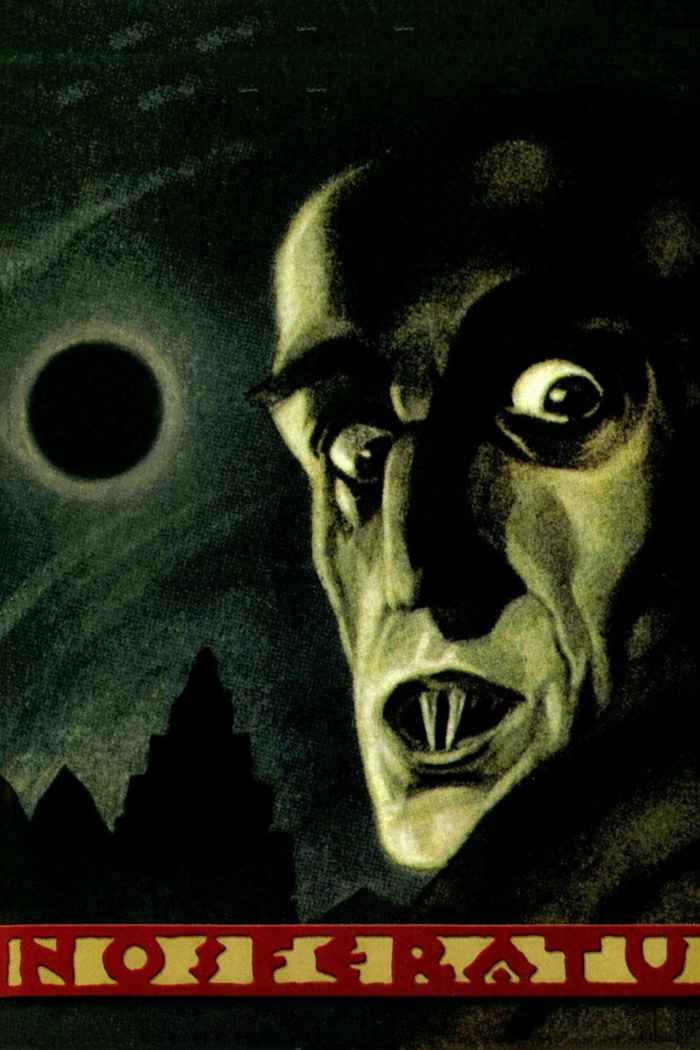
Regardless, horror films have been fascinated with sound and the lack there of for decades. The evolution of the film industry has had an amazing journey, from the time when Eadweard Muybridge filmed a galloping horse in the 187o’s 17 to the development of both the Virtual and Augmented Reality technology of 2019. 18
But the Silent Film era dates back to the beginning of film history, when from 1910-1927 motion pictures had no sound because technology had yet been developed to capture audio. 19 Instead, films were either accompanied by a live orchestra or pianist, or canned scores were overlaid and played on a loop. 20 The 20’s also gave birth to the beginning of silent horror with legendary films such as Dr. Jekyll and Mr. Hyde (1920) and Nosferatu (1922), laying the foundations for what would develop into the genre today. These films utilized elements such as theme, atmosphere, shadows, and unique camera tricks to convey terrifying stories without the use of sound or dialogue.
The same techniques can be seen in both A Quiet Place and The Silence. In A Quiet Place the use of lighting is important, particularly in the basement flooding scene. Krasinski builds tension and atmosphere by balancing the red light and reflections on the dark water, creating a yin and yang usage of lights and shadows to convey both danger and fear. 21 In The Silence, Leonetti utilizes unique camera angles as the Andrews family crawls through a drainage pipe. The limited camera angle helps build the audiences’ fear by cutting out key information about the characters’ safety. 22 Both of these scenes prove that filmmakers can build tension and suspense in their horror films without the use of sound.
The Silent Film era was unique because both Deaf and hearing audiences could equally appreciate the films, and Deaf actors were more frequently cast in silent films. When early Talkies came on scene in the late 20’s early 30’s, it was the end of an era of accessibility. Closed captioning did not come into play until the late 40’s when Deaf actor Emerson Romero (otherwise known as Tommy Albert) developed a rudimentary method of putting captions between picture frames in films. 23 So this inaccessibility greatly hindered Deaf audiences’ enjoyment of film. Now, movies such as A Quiet Place and The Silence echo back to that Silent Era of accessibility with little to no dialogue, closed captioning, and use of ASL. This level of representation is what Hollywood should continue to seek to produce.
Why Audiences Enjoy Horror
The fascination with these types of stories could be linked with the psychological concept of fear. Typically with silence comes peace. There is a satisfaction in finding a moment without the over-stimuli of modern life. This ideal is off put by the drama and terror of knowing that with sound comes great danger and most likely death. So for this kind of movie, there is no peace in these quiet moments.
Dr. Mark Griffiths, psychologist and Director of the International Gaming Research Unit in the Psychology Division at Nottingham Trent University, wrote for Psychology Today, saying:
According to a 2004 paper in the Journal of Media Psychology by Dr. Glenn Walters, the three primary factors that make horror films alluring are tension (generated by suspense, mystery, terror, shock, and gore), relevance (that may relate to personal relevance, cultural meaningfulness, the fear of death, etc.), and (somewhat paradoxically given the second factor) unrealism. 24
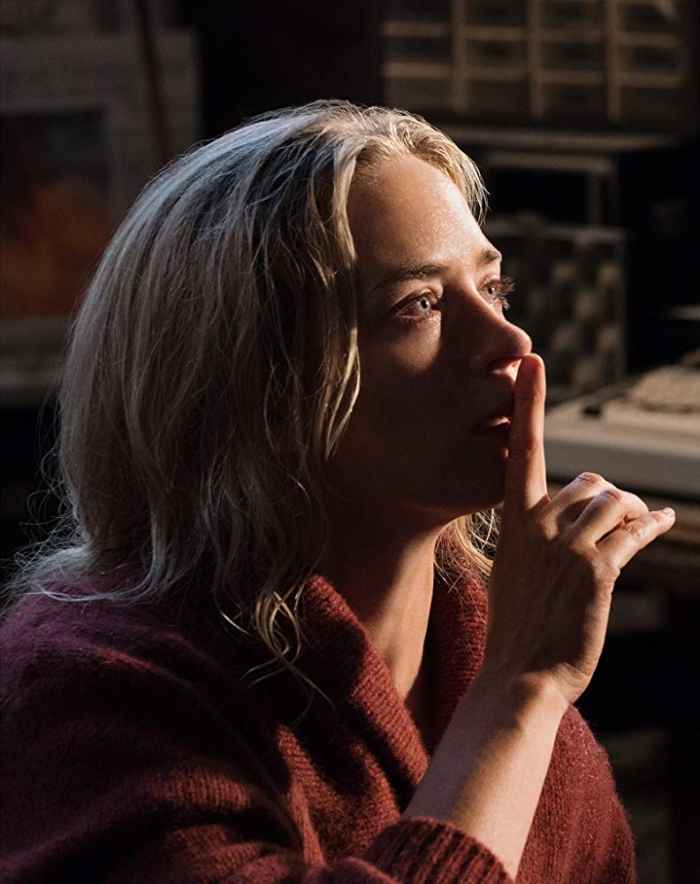
With this knowledge at hand, it is easy to then extrapolate that tension, relevance, and unrealism in this new horror film formula. Audiences find tension in that the characters’ survival hinges on total and absolute silence. Relevance can be found in the fear of being heard and the meaningfulness of the Deaf community representation. Finally, the unrealism is found in the advanced, evolutionary type of hunters that have tipped the balance of the food chain.
Griffiths continues to report that (according to Dr. Deirdre Johnston) “there are four main different reasons for why we… like watching horror movies (gore watching, thrill watching, independent watching and problem watching).” 25 He continues to define these four reasons, and points out that specific “dispotitional [sic] characters” are also determining factors, such as: “fearfulness, empathy, and sensation seeking.” 26
Griffiths further elaborates on Johnston’s theory, saying that gore watchers tend to be “high sensation seeking”, thrill watchers “like the suspense of the film”, independent watchers “have a high positive effect for overcoming fear”, and problem watchers “have high empathy for the victims”. 27
Finally, Griffiths references Dr. Dolf Zillman’s Excitation Transfer theory (ETT) and claims it is an “extension of catharsis theory”, stating: “Negative feelings created by horror movies actually intensify the positive feelings when the hero triumphs in the end. But what about movies where the hero doesn’t triumph?” He concludes by saying that small studies have proven that people’s enjoyment tend to be higher during the scary parts of horror films than they are after the fact. 28
The Theories of Enjoyment
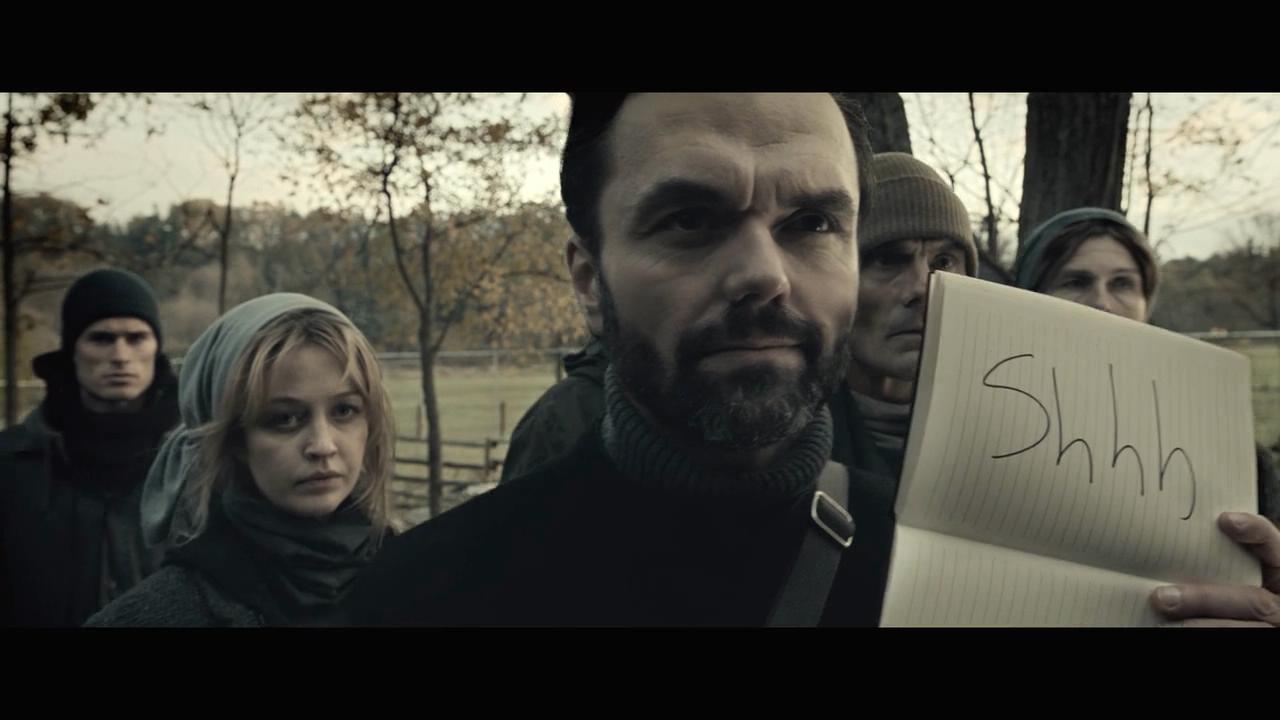
These are several viable theories as to why audiences enjoy horror films; The Three Primary Factors (tension, relevance, and unrealism), The Four Watching Reasons (gore, thrill, independent, and problem), and the Excitation Transfer Theory (ETT). All of these theories can combine to provide proof as to why this formula for the new horror films works. In knowing this, these theories can be applied to both The Silence and A Quiet Place as followed:
Both films feature The Three Primary Factors of tension, relevance, and unrealism. However, The Silence leans heavily towards unrealism, while A Quiet Place demonstrates more tension. A good example of this tension is when Lee Abbott signs to Regan: “I love you. I’ve always loved you.” 29 Until this moment Regan believed her father didn’t love her because he indirectly blamed her for her little brother’s death. Lee’s words were significant at this moment in the film’s climax because not only did it strengthen the bond between father and daughter, it increased the tension as his death was impending.
Although both films meet The Four Watching Reasons (gore, thrill, independent, and problem), it is arguable that some apply more so than others. A Quiet Place arguably has more suspense for the thrill watchers than gore, although the birth scene is a bit bloody. Nevertheless, The Silence does have gore, suspense, and a sense of helplessness for problem watchers. A good example of this suspense is when, upon realizing the true extent of the vesp threat, Ally signs to her family: “I know how to live in silence, we all do.” 30
When it comes to the Excitation Transfer Theory (ETT), can it be said that there is a discernible hero triumphing in the end of both films? In A Quiet Place there is the specific moment of inspiring hope when Regan learns what effects the electronic feedback from her cochlear implant has on the aliens. During the final scene she and her family are huddled in the basement when she realizes the alien’s weakness; this instantly makes up for the terror from previous scenes. 31 The same can be said for Ally in The Silence. There is a certain satisfaction in knowing that, despite the threat of the vesps, she and her family reached the safe haven where they were able to adapt to their new, savage surroundings. 32 While both the Abbott family and the Andrews family can be considered the heroes of their own tales, and the monsters their villains, the negative feelings evoked by both movies does satisfy the ETT in their struggle for survival. This proves that the new sub-genre of horror, this hearing verses not hearing, and the films without sound, do meet all the standards for the theories of enjoyment.
The thrill of horror, of not being able to make a sound, of the struggle to survive, has become a notable pattern in Hollywood as of late. In both films, The Silence (2019) and A Quiet Place (2018) exemplify this formula for a unique terror that honors the 1920’s silent horror films that influenced the genre, while simultaneously providing representation for the Deaf community. It is undeniable at this point that Hollywood has an ever growing fascination with dystopian worlds and monsters that hunt the human race primarily via hearing. Films that follow this formula also comply with the theories of enjoyment, including The Three Primary Factors, The Four Watching Reasons, and ETT. All of this combines to make films such as The Silence and A Quiet Place so appealing to Hollywood, and audiences who enjoy a good scare. Will these types of movies continue to rise in popularity? Only time will tell, but the short-term answer is: certainly.
Works Cited
- Lebbon, Tim. The Silence. London, Titan Books, 2015. ↩
- “The Silence.” IMDb.com. n.d. Accessed 1 April 2019. https://www.imdb.com/title/tt7315484/?ref_=nv_sr_1 ↩
- “The Silence.” IMDb.com. n.d. Accessed 1 April 2019. https://www.imdb.com/title/tt7315484/?ref_=nv_sr_1 ↩
- The Silence. Directed by John R. Leonetti, performances by Kiernan Shipka, Stanley Tucci, and Miranda Otto, Constantin Film, 2019. ↩
- “A Quiet Place.” IMDb.com. n.d. Accessed 1 April 2019. https://www.imdb.com/title/tt6644200/?ref_=nv_sr_1 ↩
- A Quiet Place. Directed by John Krasinski, performances by Emily Blunt, John Krasinski, and Millicent Simmonds, Paramount Pictures, 2018. ↩
- A Quiet Place. Directed by John Krasinski, performances by Emily Blunt, John Krasinski, and Millicent Simmonds, Paramount Pictures, 2018. ↩
- A Quiet Place. Directed by John Krasinski, performances by Emily Blunt, John Krasinski, and Millicent Simmonds, Paramount Pictures, 2018. ↩
- “A Quiet Place.” IMDb.com. n.d. Accessed 1 April 2019. https://www.imdb.com/title/tt6644200/trivia?ref_=tt_trv_trv ↩
- “A Quiet Place.” Rotten Tomatoes. n.d. Accessed 1 April 2019. https://www.rottentomatoes.com/m/a_quiet_place_2018 ↩
- Kincheloe, Pamela J. “‘A Quiet Place’ Falls Into A Tired Trope About Deafness.”16 April 2018. Huffpost. Web. Accessed 5 June 2019. https://www.huffpost.com/entry/opinion-kincheloe-quiet-place-deaf-people_n_5ad10645e4b0edca2cb9acc6 ↩
- Kincheloe, Pamela J. “‘A Quiet Place’ Falls Into A Tired Trope About Deafness.”16 April 2018. Huffpost. Accessed 5 June 2019. https://www.huffpost.com/entry/opinion-kincheloe-quiet-place-deaf-people_n_5ad10645e4b0edca2cb9acc6 ↩
- Kincheloe, Pamela J. “‘A Quiet Place’ Falls Into A Tired Trope About Deafness.”16 April 2018. Huffpost. Accessed 5 June 2019. https://www.huffpost.com/entry/opinion-kincheloe-quiet-place-deaf-people_n_5ad10645e4b0edca2cb9acc6 ↩
- Kincheloe, Pamela J. “‘A Quiet Place’ Falls Into A Tired Trope About Deafness.”16 April 2018. Huffpost. Accessed 5 June 2019. https://www.huffpost.com/entry/opinion-kincheloe-quiet-place-deaf-people_n_5ad10645e4b0edca2cb9acc6 ↩
- Stanley, Alyse. “Netflix’s ‘The Silence’ gets blasted for butchered sign language, glaring plot holes.” 12 April 2019. The Daily Dot. Web. Accessed 5 June 2019. https://www.dailydot.com/upstream/netflix-the-silence-backlash/ ↩
- Parfitt, Ellie. “Deaf community speaks out against new film ‘The Silence’.” 21 September 2018. Hearing Like Me. Web. Accessed 5 June 2019. https://www.hearinglikeme.com/deaf-community-speaks-out-against-new-film-the-silence/ ↩
- Sklar, Robert. and David A. Cook. “History of the motion picture.” n.d. Encyclopedia Britannica. Accessed 28 April 2019. https://www.britannica.com/art/history-of-the-motion-picture#ref52138 ↩
- Gibson, Josephine. “TECHNOLOGICAL DEVELOPMENTS IN FILMMAKING.” 20 Dec. 2018. Blaze Tech Hub. Accessed 28 April 2019. https://www.lightblazer.com/technological-developments-in-filmmaking/ ↩
- Sklar, Robert. and David A. Cook. “History of the motion picture.” n.d. Encyclopedia Britannica. Accessed 28 April 2019. https://www.britannica.com/art/history-of-the-motion-picture/The-silent-years-1910-27 ↩
- Kramer, Fritzi. “About Silent Movies: The music of the silent film.” Movies Silently. 7 April 2013. Web. Accessed 5 June 2019. http://moviessilently.com/2013/04/07/about-silent-movies-4-the-music-of-the-silent-film/ ↩
- A Quiet Place. Directed by John Krasinski, performances by Emily Blunt, John Krasinski, and Millicent Simmonds, Paramount Pictures, 2018. ↩
- The Silence. Directed by John R. Leonetti, performances by Kiernan Shipka, Stanley Tucci, and Miranda Otto, Constantin Film, 2019. ↩
- Traynor, Robert. “Captioning for the Deaf: Where Did It Come From?” 16 Feb 2016. Hearing Health & Technology Matters. Web. Accessed 19 June 2019. https://hearinghealthmatters.org/hearinginternational/2016/tv-captioning-where-did-it-come-from/ ↩
- Griffiths, Mark D. “Why Do We Like Watching Scary Films? A brief look at psychological horror at the cinema.” 29 Oct. 2015. Psychology Today. Accessed 28 April 2019. https://www.psychologytoday.com/us/blog/in-excess/201510/why-do-we-watching-scary-films ↩
- Griffiths, Mark D. “Why Do We Like Watching Scary Films? A brief look at psychological horror at the cinema.” 29 Oct. 2015. Psychology Today. Accessed 28 April 2019. https://www.psychologytoday.com/us/blog/in-excess/201510/why-do-we-watching-scary-films ↩
- Griffiths, Mark D. “Why Do We Like Watching Scary Films? A brief look at psychological horror at the cinema.” 29 Oct. 2015. Psychology Today. Accessed 28 April 2019. https://www.psychologytoday.com/us/blog/in-excess/201510/why-do-we-watching-scary-films ↩
- Griffiths, Mark D. “Why Do We Like Watching Scary Films? A brief look at psychological horror at the cinema.” 29 Oct. 2015. Psychology Today. Accessed 28 April 2019. https://www.psychologytoday.com/us/blog/in-excess/201510/why-do-we-watching-scary-films ↩
- Griffiths, Mark D. “Why Do We Like Watching Scary Films? A brief look at psychological horror at the cinema.” 29 Oct. 2015. Psychology Today. Accessed 28 April 2019. https://www.psychologytoday.com/us/blog/in-excess/201510/why-do-we-watching-scary-films ↩
- A Quiet Place. Directed by John Krasinski, performances by Emily Blunt, John Krasinski, and Millicent Simmonds, Paramount Pictures, 2018. ↩
- The Silence. Directed by John R. Leonetti, performances by Kiernan Shipka, Stanley Tucci, and Miranda Otto, Constantin Film, 2019. ↩
- A Quiet Place. Directed by John Krasinski, performances by Emily Blunt, John Krasinski, and Millicent Simmonds, Paramount Pictures, 2018. ↩
- The Silence. Directed by John R. Leonetti, performances by Kiernan Shipka, Stanley Tucci, and Miranda Otto, Constantin Film, 2019. ↩
What do you think? Leave a comment.
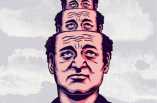
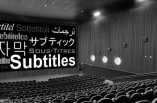



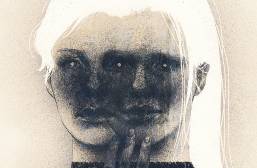


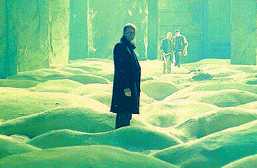

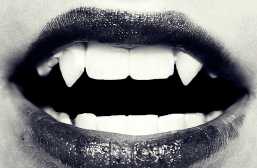
The Silence was a decent film. The point that got me was when he used the wood chipper to kill them. I was just thinking the whole time, that’s the solution to get rid of them lol. After that I lost interest a little bit. Also the incident was only a couple days old and the was already a formed cult. That part didn’t make sense.
So many horror directors have no idea how to create or build suspense…far too much screeching and thumping music.
I love silence in movies. My most memorable moment from the 1993 version of The Fugitive, is when U.S.Marshal Deputy Sam Gerard(Tommy Lee Jones)takes an out of the blue phone call from Dr.Richard Kimble(Harrison Ford)in his department.Surrounding him is all sorts of background noise,but the way he use’s his hand and facial expression to command silence is breathtaking.
Nothing wrong with silence if the story is being told by other means. Lots wrong with it if the director is simply padding out a thin script or attempting to look profound.
For a century-plus old visual medium cinema is still remarkably poor at telling stories with images. And far too many films are far, far too long.
Love your article. It’s good to see that there are still directors who trust the audience enough, as well as their own creative ability, to let the visual tell the story.
One of the most interesting films regarding sound is the underrated 1955 noir The Big Combo, which uses sound as pain and as torture, and the flash of gun barrels are rendered in absolute silence. It’s beautiful to look at, too, with cinematography by John Alton.
The film 2001 could have been highlighted. It was a revelation for me as a teenager. The images of space coupled with the music were overwhelming and the sparse dialogue became focal points. A spectacular groundbreaking film that will stay with me above all others.
I love the almost-soundless scenes in 2001: A Space Odyssey where HAL kills Poole by cutting him loose from the ship and Bowman takes the pod outside to try to save him. Sometimes there is just dead silence – as there would be in space. Also, the scene where Bowman disconnects HAL’s higher brain functions, punctuated by the sound of Bowman’s breathing inside his helmet. Takes you right in there, very close. Brilliant.
I always think that, when you watch a silent movie, which I find quite a difficult thing to do, you are reminded of how important a movie soundtrack (music, atmosphere, dialogue, FX) really is. Film is just as much a sound medium as it is a visual medium.
What I hate more than anything is the over-use of sub-sonic ‘stabs’ of sound to punctuate every ‘shock moment’. I’m sure there must be a technical terms for them. Tiny explosions of sound. POW! It’s like training Pavlov’s dogs to feel a certain emotion at a certain point, regardless of whether the ‘moment’ merits it or not.
Silent movies weren’t watched in silence though,were they? The soundtrack was provided in the cinema on piano or organ (which might even have the ability to provide the odd sound effect).
Watch any Woody Allen film and all the dialogue is audible. I did read somewhere years ago that he still mixes the soundtrack for his films in mono. A great film maker who is currently a victim of unproven accusations.
I think we’ve always had these films around us, just that as audiences have broke smarter the demand for them to be more mainstream has increased.
With A Quiet Place I hoped the audience (and their snacks) were equally silent in my screen.
Great film – destined to be a modern classic I would say.
The majority of the film being so quiet makes you very self-conscious of the noise you make so pleased to report it was a decent crowd.
Damn right!
It used to be subtle background music, now its up-front and aggressive, the arrogant musicos determined to swamp dialogue to the point where you turn off and read a book.
From docos to news to dramas,nothing is safe from their deafening racket – making the spoken word secondary to their ghastly musical compositions. Time to get back to words we can hear and programmes we can enjoy with musical accompaniment.
working as a film projectionist i have to say the sound on most films is all over the shop, from inaudible whispers one second to deafening roar the next. horror films use this to a great extent -‘the startle effect’. audiences don’t jump out of fear, but because they’ve been lulled by quiet, only then hit over the head with what is basically noise.
I have to say that I agree with you. I stopped going to the cinema for the very reasons you’ve mentioned…oh, that and it’s too damned expensive these day, and I have Tinnitus, so it’s actually a painful experience for me to have my ears blasted by a wall of noise. In the past I’ve actually walked out of a cinema during a film because of this very reason.
I did a stint, many years ago now, as a Magic Lantern projectionist in an old theatre that, for a short while, hosted Victorian themed evenings. We had a pianist at the front of the auditorium and that was it, in terms of music. It was quite surprising just how quickly the audience became accustomed to this ‘new’ format and we even had kids saying afterwards how much they’d enjoyed the show. One actually said she felt it was more magical than going to the cinema! What a compliment.
I’m friends with Tim and I’m ecstatic for him that he got his book adapted into a movie. I watched it today and I mostly enjoyed it but there are issues. I did like it but it felt rushed and could have been explored more in a way which would have added even more tension. Because it was introduced and then dealt with (one way or the other), it kind of felt like it all just happened. This happened, that happened, this happened, the end.
I just finished watching it. I enjoyed it for what it was but it’s exactly the same as the Netflix released last year with Sandra Bullock ”Bird Box’. with some copying i.e the eggs from scenes in ‘The Mist’ (eggs were anatomically way too big #stupid) Getting fed up with vacuous films with no back story. So if the book was written before Bird Box I guess Bird Box ripped off this book and in turn movie.
The Silence was meh as hell… it would have better if it was a limited series, but 90 minutes was not enough time for the exposition this story needed. Bird Box was better, which isn’t saying much but A Quiet Place was light years better, as was Don’t Breathe. I hope this is the last film in this “Shut The Hell Up” genre.
Lovely article.
Contemporary films with sparse dialogue, or no dialogue at all, is part of a wider minimalist trend in (art house) cinema. Backstory and psychological depth are only hinted at; instead the focus is on characters’ actions and body language, often with great detail for cinematography and sound design. (An example I saw last night is Lynn Ramsey’s You Were Never Really Here, but nowadays there are many.)
Usually this type of minimalism is seen as a marker of subtlety, especially when contrasted with blockbuster bombast, and often it is. But when trends catch on, their hallmarks become trappings and cinematic minimalism is no different. The focus on cinematographic detail can become fetishistic, and doing away with backstory can mean a film can become a “ride” that doesn’t linger long after the credits roll, ironically much like the blockbuster action films these type of films are supposed to contrast with.
The minimalism trend in general (not just cinema) is a natural reaction to contemporary life’s complexity. But when the need to reduce the complexity of reality to more comfortable simplicity becomes a goal in itself, a lifestyle, in the end it is just another form of escapism, however tastefully done.
Actually held my breath a few times and physically put my hand on my mouth in at least a couple of scenes in the second half, which pretty much sums up for me how well Krasinsky worked on the tension factor in this movie.
The movie was good, but the silence in the theater made it awkward to eat hahaha. Definitely well done but I wasn’t into it
A Quiet Place was not a good movie. After all the buzz, we watched it expecting something amazing and spent a lot of time during it going “huh????” Let’s face it, that family survived because of privilege…they had a really nice farmhouse with a conveniently updated barn next to it. The mother was probably a doctor ergo all the medical equipment…also she had a REALLY good colorist if her roots were barely showing after months of being in a dire situation. And the designer clothes? And the Martha Stewart-like supply of preserves? And all the amateur radio equipment?
We saw plot holes everywhere. How did they get the tanks of oxygen to the basement without making noise? No one passed gas in their sleep for months on end? After the first few weeks, how did they expect to keep a baby quiet???
And now, ladies and gentlemen, they’re making a SEQUEL????
You need to suspend a lot of disbelief with a Quiet Place, regarding what makes a noise and what doesn’t. But once you’ve done that, it’s a great film. Would a detailed depiction of how they got oxygen tanks into the basement really make it more entertaining, or just longer?
If all films were required to satisfy the “I’ve found a plot hole” brigade, they’d never be able to make any thrillers at all.
The imperative for near-Silence in A Quiet Place raises the intriguing question about the couple’s sex life, presumably giving new relevance to the phrase ‘safe sex’. Unless someone who has seen the film can confirm otherwise, I assume the real life husband and wife leads thought a sex scene would be too intrusive, so we are likely to be left to speculate indefinitely.
Here are some suggestions for great quiet films:
1. Gerry
2. Dersu Uzala
3. Rififi.
4. A Ghost Story
“No One Will Save You”
A novel spin on the idea of ‘silent cinema’. Is this a passing fad or the beginning of a new approach to film making? Only time will tell. Good article and thanks for the chance to help in the editing process.
Just watched A Quiet Place, it ruined me emotionally! In all the good ways. This film let’s my imagination dig into the terrifying reality of this world, it is made of nightmares, I related to their struggle to feel safe. Every character feels real and that also means they have flaws and will not be perfectly logical people, ’cause they’re only human. It is incredibly difficult to let go of what makes you selfish or selfless… With that in mind it is obvious that your walk of life will dramatically change the meaning of this movie, I think that is interesting. For me it breaks my heart the events in this world are tearing their life apart and shit hit the fan all at once. I love the sound design too, I’m used to BIG loud bang noises going bump in the night . . . but this movie made me scared of just the thought of sound, that’s a new level of anxiety! I hate/love the movie for all the goddamn terrifying moments and not letting me settle…
A Quiet Place was possibly the stupidest film I’ve seen in a while and Netflix has become almost the anti-HBO in that the quality control is zero and the risk-taking even less. This is what happens when you let algorithms drive creative decisions. Welcome to the future of entertainment.
Films are not getting quieter. Audiences are growing deaf earlier.
John Krasinksi is excellent in this, in the Office US he was always excellent at portraying his feelings through his face without saying anything and the same can be said with this film. The look of terror he gives whenever the slightest noise is made really makes this film so suspenseful. I have never felt such a feeling of dread throughout a film.
Pounding noise and CGI visuals dull the senses. Look at the eloquence Haneke achieves through the observational in his films (eg. Amour). If Hollywood would appreciate that we’re far more perceptive and sensitive that they presume us to be, we’d all be better off.
I remember reading an interview with the fellow that produced the three Star Wars prequels: sorry but I can’t remember his name and I haven’t time to look it up.
He said they’d had a study done that showed the most profitable blockbuster films ended with a loud stirring musical cue. Apparently it set the tone for how people felt when they left the theatre, irrespective of their actual level of enjoyment during the film.
As a result they made sure the films were as loud as possible at the end.
Haneke is a great reference in relation to his use of quietness on his soundtracks. Caché (Hidden) had great sound editing, no music and spare dialogue.
Silence or minimal use of sound is a very interesting technique that film makers have access to, i hope filmmakers take more advantage of that in the future, learning from the success of prior films like A Quiet Place.
One of the most challenging films I saw in recent years was The Tribe. The characters are deaf and mute, and the dialogue is all in sign language with no subtitles.
Sounds like a fun film.
We need quiet cinemas too.
In the cinemas near me, the audience is seldom quiet and on those occasions when they aren’t unwrapping sweets, slurping drinks or asking their partner what that actor was famous for, their phone screens light up as they urgently update their FaceBook profiles.
I generally like the idea of a shared emotional experience when viewing a good movie, but I don’t like sharing it with people who aren’t properly engaged with the movie. The trouble is that you don’t know what sort of people you will be watching the film with until you’ve paid the money and sat down.
Your cinema sounds awful.
I also find this silent horror movement fascinating, especially since it feels to me more like a rebranding of tried and true horror techniques perfected by filmmakers decades ago than it does a new movement in film. Still one of my favorite “silent horrors” from back in the day is the masterfully suspenseful “Wait Until Dark” – an iconic work of Terence Young starring the great Audrey Hepburn. The film, based on the original play of the same name, follows the horrific experience of a blind woman trapped in her home with a murderer. It highlights the blind community in much the same way that “A Quiet Place” does the deaf community. Ultimately, viewers are made to feel greater sympathy for those that live blind, and they are also led to marvel at the incredible things the blind character achieves, despite her difficulties.
I was watching Dreyer’s The Passion Of Joan of Arc’ the other day,the 20 frames a second version with the choir score,now that is another remarkable piece of cinema that tells the tale with mostly closeups of faces,it’s truly remarkable just how much can be told with micro expressions and good lighting in the eyes.
An interesting metaphor of modern times where some voices are allowed while others must be suppressed and silenced for reasons…
Boundary-breaking art in any form is, in my opinion very valuable. If at the very least, because it pushes the envelope and redefines what is possible. In my own experience, that risk-taking behavior has become something that I so greatly appreciate. Your review of these two films in relationship to the silent film area and the enjoyment criteria was very enjoyable.
It made me think of Disney Pixar’s WALL-E. I remember watching it for the first time and thinking, somewhere around the 20th minute, “wait, I haven’t heard anyone talk yet.” The best part was, that I wasn’t disappointed – it brought about a feeling of relief, relaxation. The relationship that I had developed with WALL-E was unlike any that I had ever experienced in film. The silence left room for my own thoughts and feelings in the story arc and helped me connect with WALL-E and his directive in an effortless way.
Modern movie sound-design – with the odd exception – is just one massively compressed cheesecake, designed to blow the senses. My favourite exception is probably No Country For Old Men – from Tommy Lee Jones’s epic scene-setting monologue to Carter Burwell’s barely-there score, it’s a masterpiece of subtlety.
You leave cheesecake out of this.
Cheesecake? Fatburger!
“Into Great Silence” is good film, if you can handle a year in the lives of Chartreusian monks.
I like how the focus is more on visuals nowadays. I enjoyed both Arrival and Blade Runner 2049, both big budget films, but both allowing space for the viewer to absorb the imagery. Arrival in particular has dialogue that’s actually meant to be inaudible or indistinct in order to promote a sense of reality. Same director on both so perhaps that’s a trait of his but as I haven’t seen anything else he’s made I can’t say either way. Perhaps it’s because his first language isn’t English: either way it was good to watch both films without the exposition fairy chelping in my ear every couple of minutes.
BladeRunner had enough “space” in it to house a couple of other films. Long sequences of people walking up and down followed by long sequences of people punching each other in the face.
Emily Blunt is smart.
That’s all I have to contribute to this conversation.
Too much modern TV/Film is shouting,aggression, emotional melodrama, too much talking,endless empty chatter….all influenced by global Americanisation,so that all countries seem to be producing the same thing these days instead of being individual.
I really liked your article. Though I haven’t seen either movie, your synopsis of them both makes me want to check them out. You often see scenes in horror movies where a victim, or even the hero sometimes, needs to stay silent in order to escape danger. About 90% of slasher films will contain at least one scene of this. I think it adds suspense to the story and makes the audience think about what is going to happen next that much more. But an entire movie of that would be interesting. I will have to watch these two movies. Great article.
Nuri Bilge Ceylan makes use of silence beautifully. There are several scenes in Once Upon a Time in Anatolia that particularly stand out…the apple falling from the tree and rolling into a brook and coming to a stop, the young girl traversing the room with a lamp to name but two…all delivered in eerie silence but for the natural sounds of the wind and rustling leaves and grass. A master class in sound design. Of course he loves Tarkovsky and it shows.
Couldn’t agree more, a superb filmmaker
A great article! I hadn’t heard of the Four Watching Reasons, the Three Primary Factors, or ETT before. All very interesting!
Very insightful!
Great article!
I noticed that in general people tend to be scared when one or a few of our senses are jeopardized. Birdbox (2018) is also a perfect example of it. However I do believe the films you mention are executed in a more captivating way 🙂
i enjoyed The Theories of Enjoyment
The fact that these movies, specially A Quiet Place, tell such complete and complex stories with a minimum use of dialogue is impressive, and with the analysis of the ETT it makes sense why as an audience we enjoy so much these suspenseful movies.
A good essay. I enjoyed your insight into these movies I watched.
This article inspires me to take a deeper look at the horror genre. Thank-you.
It’s important to understand the relation of senses with your emotions and the connection between sound and fear.
Great article! I think that a movie where the actors can convey much of the story line without speaking, is a mark of a great film.
Great article. This was clearly thoroughly researched and well written. I love how you explained the historical and social context of silent films.
This is a very thorough article on an interesting subject! I do think noting the disability representation is important, as you did. I also think that it would be interesting to tie the idea of silence (or being silenced) into other issues. For example, exploring why this is an anxiety for many people. Great work!
As a huge horror fan, I love the idea of analyzing horror merely through sound alone. Although I have yet to watch The Quiet Place, I think this article did a wonderful job at outlining the key plot points and taking a film that focuses specifically on the lack of sound and contextualizing it within the horror genre!
I enjoyed both films but I can see why the deaf community was disappointed at the lack of casting of deaf actors; that’s a terrible shame and I’d like to see horror films that hinge upon disability as a theme become more inclusive in the spirit of “nothing abotu us without us,” as it were.
Considering that so often the score of horror movie signifies the horror it’s really interesting to just do away with the sound all together, this in an of itself is unrealistic of our world and not what we expect for horror films. The off-putting nature itself is what terrifies.
I’ve never really engaged in horror films not because of the horror aspect but the over-the-top cinematography, predictability and quirky stereotypical characters. However, with these “silent” films like Bird Box and A Quiet Place I was extremely impressed. My favorite movie ’till this day is Hush and it had about 3 characters. I think there is such an emphasis on the “startle effect” and precise coordination when a movie is low-budget, simple and it brings out empathy from the viewer. I cared more about families trying to survive this unseeable monster than how cool the CGI was or how loud was the intense music. I think it’s awesome that you’ve explained this silent theme historically and socially; cool article! Made me want to watch other horror films.
Silence plays an important role as fas as the tense and horror is concerned. Quite smart and thoughtful, if you want to succeed, of course with a well-structured script and clever idea.
I really enjoyed A Quiet Place and loved that, for the most part they had used ASL to communicate as characters. It did bother me, however, that they missed the opportunity to keep this consistently in frame throughout the film with some shots cutting off the hand gestures. This could have been a fantastic chance to include the deaf community and not make everything explicit for the rest of the audience. I think a powerful motif within these sorts of films (reaching farther now to include films such as Bird Box that limit the use of sight) is the removal of sense that a large portion of the audience take for granted. By removing something that many of us use regularly without thought it creates that tension and unease whilst simultaneously being more inclusive of another portion of the audience. It’s moments that members of the audience who do understand ASL can appreciate more and take with them but it doesn’t remove much from the wider audience who do not understand.
I would love to see a story told that fully embraces these ideas and allows their audience to experience something rarely seen in cinema nowadays.
A quiet place is my favourite
In addition to representation, I think one of the nicest parts about these silence-oriented movies is that they represent a more intentional approach to the aspects of film making that are often seemingly secondary in the production of Hollywood film. More and more we’re starting to see movies that are truly conscious of exactly what is onscreen and what is being heard. It’s thinking like this that makes film that truly embraces the medium and tells stories only film is capable of, and I think a push in that direction makes The Quiet Place and all it’s contemporaries and derivatives so worthwhile in terms of a lasting affect on film.
I absolutely adore films which revere silence. Alpha(2018) is a movie about prehistoric men and how they came to be friendly with man’s most loyal friend. Almost 80% of the film has no dialogue. It is a riveting watch.
The Quiet Place was one of the best movies of 2018. Krasinski was able to recreate moments that are rare within the cannibalistic genre of horror. I have not had a chance to see the second film. I think the work that Krasinski is doing with the deaf community is extremely important. Not only has he provided representation for a community that is rarely seen in film but has created an immersive experience that allows the viewer to place themselves with it within the world of a deaf person.
I think losing one’s voice, both literally and metaphorically, is an inherent horror staple. Harlan Ellison’s “I Have No Mouth and I Must Scream” and its subsequent trope also come to mind.
This is a super interesting concept. The horror film ‘The Descent’ from 2005 also follows this notion of fear in silence and the fear of being heard, which establishes that this idea is something which has been prevalent for many years. Perhaps you could say this is somewhat of a self-consciousness that we as a society have developed where the idea of being watched or caught is an extremely harrowing thought.
I think “sensory deprivation” could be it’s own horror sub-genre. We got Bird Box too, as well as Hush. Suppose there is always an element that they could try and link back to, trying to make you think “imagine you were in this situation but without xyz.”
Great job on this one.
A Quiet Place was wonderful